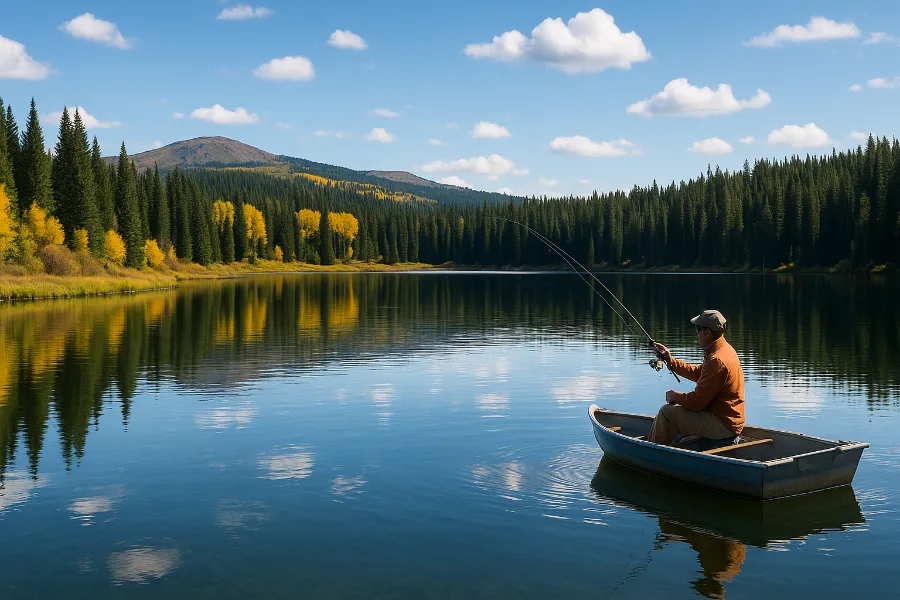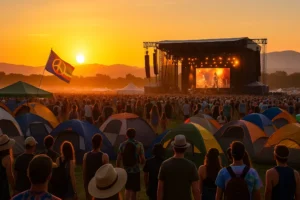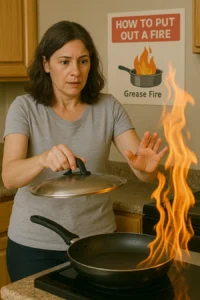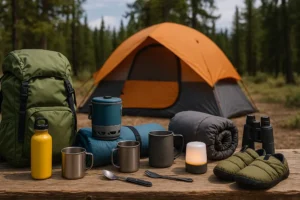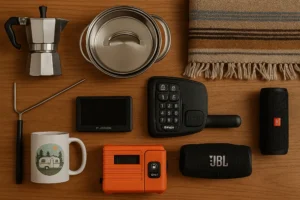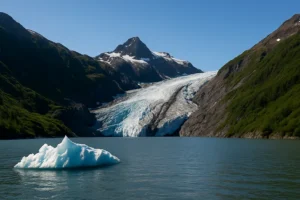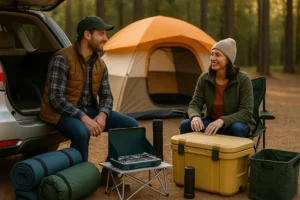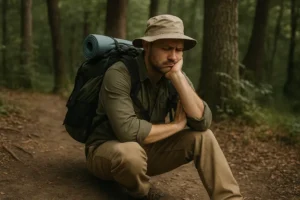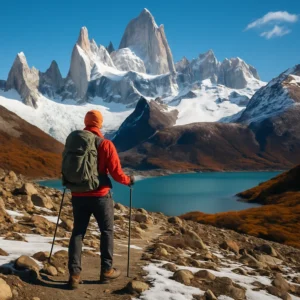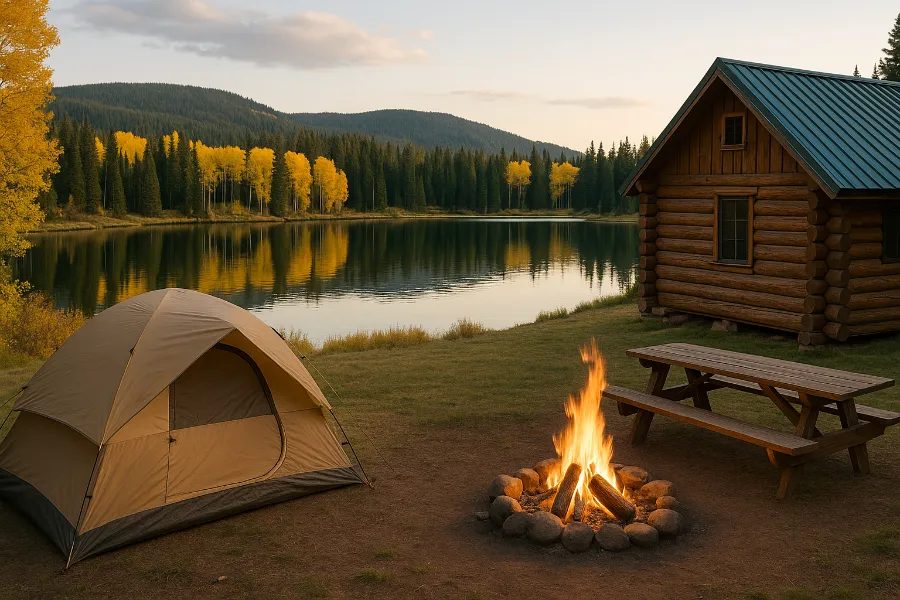
If there’s one place in Colorado that belongs on every angler’s bucket list, it’s the Grand Mesa. Known as the world’s largest flat-top mountain, this massive plateau stretches across more than 500 square miles and holds over 300 lakes. That makes grand mesa fishing unlike anywhere else in the Rockies. Whether you’re after a quick roadside cast or planning to backpack into a secluded alpine lake, the Mesa has water for everyone—and fish waiting in nearly every pool.
The Grand Mesa: A Landscape Built for Anglers
Rising more than 10,000 feet above sea level, the Grand Mesa towers southeast of Grand Junction and looks more like a natural fortress than a mountain. Unlike Colorado’s jagged peaks, the Mesa is broad and flat, draped with forests of spruce and aspen. The real gem, though, is the water. Hundreds of lakes—some no bigger than ponds, others stretching across wide basins—dot the landscape. They’re close enough that you could fish several in one day, but each feels unique.
The Mesa’s altitude means cooler summers compared to the valleys below. When the rest of Colorado bakes in July heat, anglers here find themselves casting in crisp mountain air. That makes grand mesa fishing a true summer escape.
Getting to the Water
One of the best parts of fishing the Mesa is how accessible it is. Scenic Byway 65, also known as the Grand Mesa Scenic Byway, winds from Cedaredge to Mesa and Carbondale. Along the way, it passes many lakes that can be fished right from the road. Island Lake and Cobbett Lake, for example, are minutes from parking.
But for those who crave solitude, the Mesa rewards effort. Trails like the Lake of the Woods or the hike into Bull Creek Basin lead you away from crowds to hidden lakes that feel untouched. Many of these require ATVs, horseback, or simply a willingness to hike with a pack. The effort is worth it—some of the biggest trout on the Mesa lurk in these remote waters.
Popular Lakes for Grand Mesa Fishing
With over 300 lakes, you’ll never run out of options. But here are a few standouts:
- Island Lake – One of the largest and most popular. It has a boat ramp and plenty of shore access. Anglers fish from rowboats, rafts, kayaks, and even small motorboats.
- Cobbett Lake – Smaller and walkable in less than an hour. Great for casting from shore if you don’t want to launch a boat.
- Bull Creek Reservoirs – Known for backcountry fishing with stricter regulations. Artificial lures only, with size and bag limits. Big trout are possible here if you’re willing to work for them.
- Trickle Park & Cedar Mesa – More remote, reached by ATV or dirt road. Great for anglers seeking less pressure.
- Ward, Alexander, and Hotel Twin Lakes – Perfect for RVs and family trips, with campgrounds, cabins, and easy access to tackle shops and boat ramps.
Fish Species and What You Can Catch
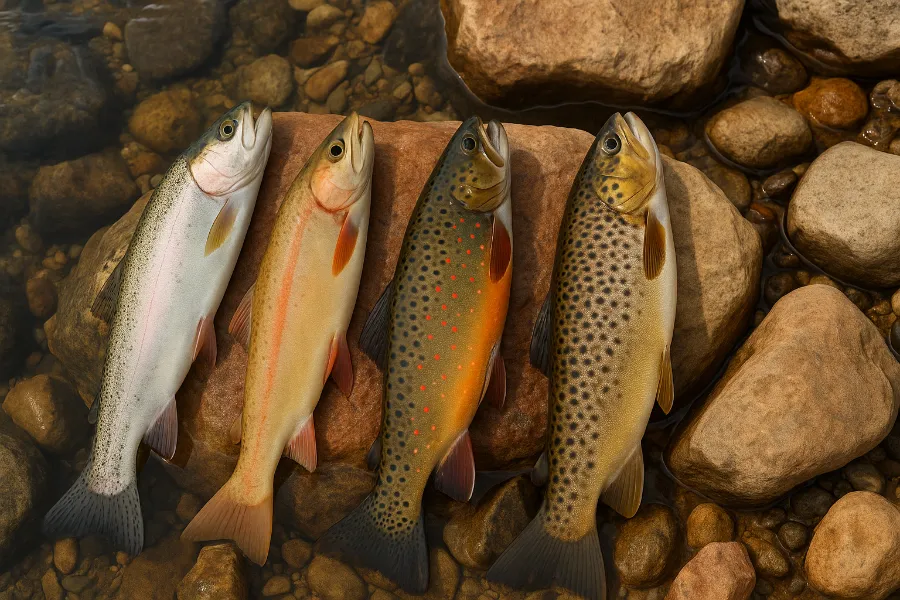
Trout are the stars of grand mesa fishing. You’ll find rainbow, cutthroat, brook, brown, and even splake in certain waters. Some lakes are stocked regularly, while others hold wild populations that grow to impressive size. Cutthroat trout, in particular, are a prized catch here.
In nearby rivers and reservoirs around Grand Junction, you might also encounter bass, catfish, pike, and walleyes. And the Colorado River itself is home to 14 native species—four of which are endangered. If you hook a Colorado pikeminnow, razorback sucker, bonytail chub, or humpback chub, remember that it must be released immediately.
Many Mesa lakes carry special regulations. Some require artificial flies and lures only, others limit possession to two trout over 16 inches. Always check with Colorado Parks and Wildlife before you cast.
How to Fish the Grand Mesa
The variety of lakes means a variety of approaches:
- Shore fishing works well on smaller lakes. Walking the shoreline gives you a chance to cover more water if fish aren’t biting in one spot.
- Float tubes and rafts are favorites on mid-sized lakes. They give you freedom to move quietly across the water and reach spots inaccessible from shore.
- Kayaks and small motorboats are common on Island Lake and a few other larger reservoirs.
- Fly fishing is a natural fit here, especially with hungry cutthroat rising to dry flies in the summer. That said, spin fishing with spinners, spoons, or jigs is just as effective.
Tip: Many anglers swear by copper-colored jigs when fishing Mesa trout.
Camping and Lodging
Fishing the Grand Mesa is as much about where you sleep as where you cast. Options range from:
- Developed campgrounds like Jumbo and Crag Crest, which have facilities and RV hookups.
- Backcountry camping near lakes like Bull Creek, where you’ll need to pack in your gear.
- Lodges and cabins around Cedaredge and Mesa, which give you more comfort while still keeping you close to the action.
- Dispersed camping throughout the National Forest, if you prefer solitude and don’t mind roughing it.
Seasonal Tips
- Summer is prime time for grand mesa fishing. Lakes are accessible, temperatures are cool, and trout are active.
- Spring and Fall bring fewer crowds and spectacular scenery. Aspens blaze with golden color in September, making it a magical time to fish.
- Winter sees ice fishing on several lakes. If you’re prepared for the cold, you can still pull trout through the ice.
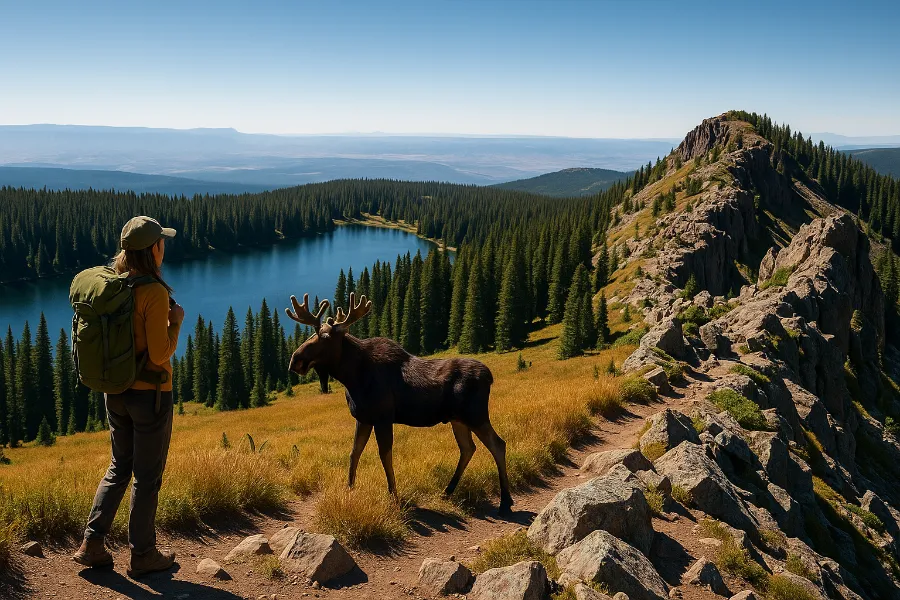
Staying Safe on the Mesa
The Grand Mesa is wild country. A few tips:
- Bring insect repellent, especially in early summer when mosquitoes are active.
- Bears do roam the area, so store food properly and stay bear-aware.
- Fire restrictions may be in place, so always check before you build a campfire.
- Weather changes quickly at 10,000 feet—pack layers and be ready for storms.
More Than Fishing
Even if you spend most of your time casting, the Mesa offers plenty of side adventures:
- Hiking the Crag Crest Trail, a spectacular ridge walk with 360-degree views.
- Mushroom hunting in late summer.
- Scenic drives along Byway 65, with stops at overlooks like Land’s End.
- Wildlife watching—keep an eye out for eagles, elk, and moose.
Why Grand Mesa Fishing Belongs on Your List
What makes grand mesa fishing unforgettable isn’t just the number of lakes or the size of the trout. It’s the experience of being in a place that feels vast, wild, and full of possibility. You might spend one afternoon catching rainbows on Island Lake, then hike into a hidden basin the next morning and hook a cutthroat that takes you on the fight of your life.
The Mesa offers something for everyone—from the family that wants a simple picnic and a few casts to the die-hard angler willing to bushwhack miles for solitude and trophy trout. With over 300 lakes, countless trails, and endless stories waiting to be made, the only real challenge is deciding where to start.
So pack your rods, lace up your boots, and head for the high country. Your next great fishing story is waiting on the Grand Mesa.

